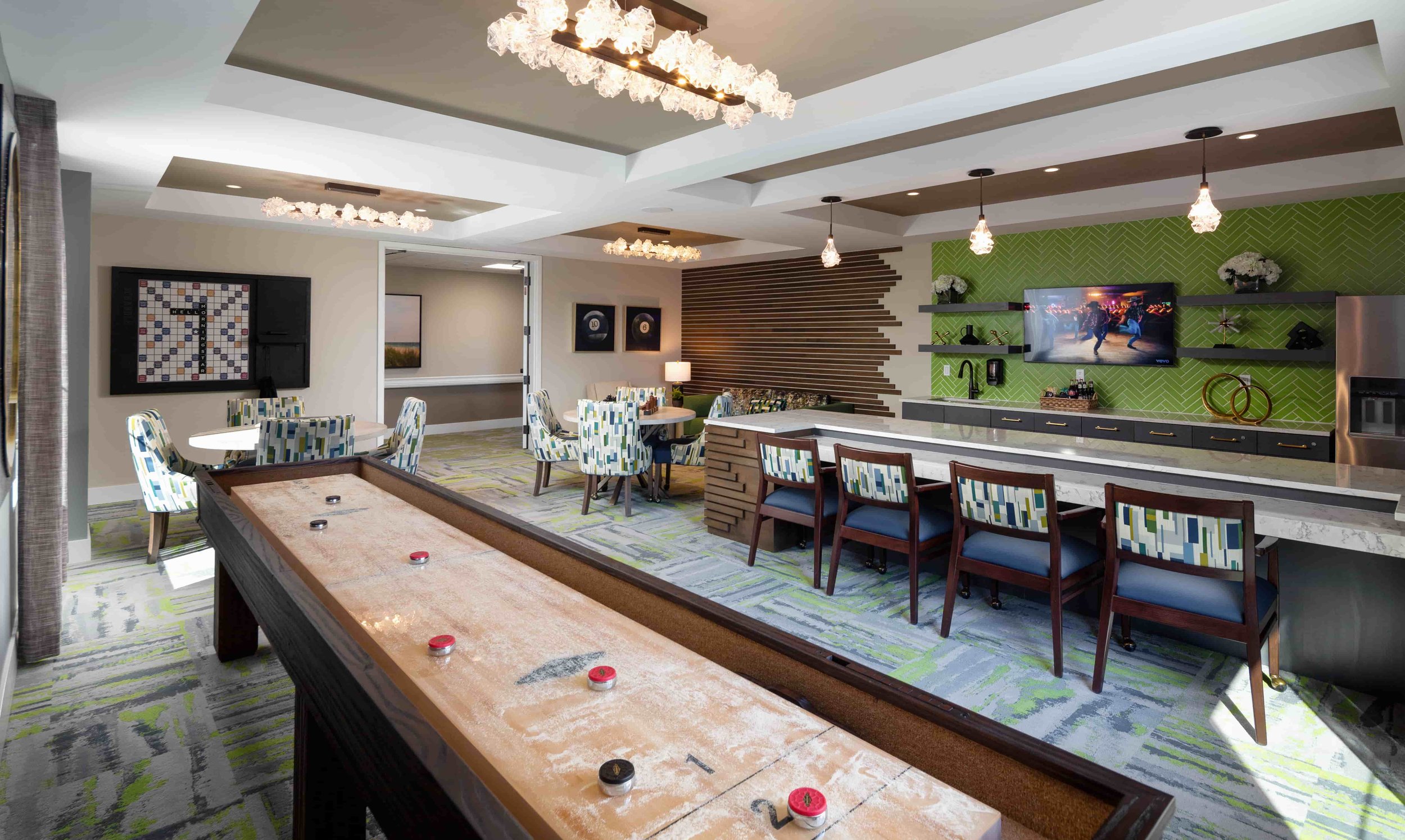The Evolution of Senior Living: Meeting the Needs of Modern Seniors
With the ever-growing global aging population, the demand for senior housing is on the rise, marking a pivotal moment where demographic shifts and senior expectations are evolving. Seniors today are more diverse in terms of ethnicity, culture, and background than previous generations. This diversity has led to a greater emphasis on culturally sensitive and inclusive senior services and communities. Moreover, the upcoming generation of seniors, characterized by their increased tech-savviness and desire for vibrant, multi-generational living environments in proximity to their families and other generations, is reshaping the landscape of senior living. Consequently, it is incumbent upon current senior living communities to adapt and undergo the necessary renovations and upgrades to remain competitive and pertinent in this evolving landscape.
The following are trends that we, as senior living interior designers, have seen an increase in demand and anticipate greater demand with the next generation of seniors.
“Seniors today are more diverse in terms of ethnicity, culture, and background than previous generations.”
Longer Active Lives
Many seniors are expecting to lead more active and engaged lives in their retirement years. They are pursuing hobbies, travel, volunteering, and even starting new careers in their later years.
To foster this spirit of vitality, multifunctional spaces, ranging from meeting rooms and libraries to art studios, gardens, and fitness centers, when complemented with tailored programming, residents can maintain their social connections, physical activity, and the exploration of newfound passions.
Tech-Savvy Seniors
Older adults are becoming increasingly tech-savvy, with many seniors using smartphones, tablets, and computers for communication, entertainment, and information. This has created opportunities for virtual healthcare, online socialization, and tech-driven amenities and services.
From virtual entertainment options to smart residential apartments and automation systems equipped with sensors, technology is expected to play a pivotal role in the future of senior living. As such, communities must invest in the necessary infrastructure to support these technologies that will soon become indispensable.
Holistic Wellness
Seniors are increasingly interested in holistic approaches to wellness, including integrative medicine, alternative therapies, and mindfulness practices to address not only physical but also emotional and spiritual well-being.
The inclusion of dedicated spaces such as massage rooms, yoga studios, meditation sanctuaries, and prayer rooms can empower residents to nurture their emotional and spiritual dimensions, complementing their physical health endeavors.
Social Connectivity
Social isolation and loneliness are significant concerns for many seniors, especially those who live alone. Expectations include access to social activities, community involvement, and opportunities for meaningful social interactions.
The creation of vibrant spaces where the magic of socialization unfolds is pivotal in fostering a sense of community. Game rooms, club lounges, bars, or music rooms can serve as hubs where residents come together, connect, and participate in the community's vibrant tapestry of life.
“This emphasis on well-being is pivotal in crafting a nurturing environment.”
While the refreshing or remodeling of senior living communities undoubtedly enhances their aesthetic appeal, it is imperative to underscore that aesthetics are not the sole driving force behind these endeavors. Refreshing these spaces presents a remarkable opportunity to enhance functionality, enhance safety measures, ensure compliance with accessibility standards, and upgrade technology infrastructure.
Furthermore, the remodeling of existing communities has far-reaching implications for staff morale, ultimately elevating the quality of life for residents. This emphasis on well-being is pivotal in crafting a nurturing environment.
In addition to these benefits, there are compelling financial incentives for owners and operators contemplating remodeling their senior living communities. A modern, upgraded community is more likely to attract residents, increase perceived value, and demonstrate a commitment to resident well-being while substantially reducing ongoing maintenance costs, thereby culminating in a healthy return on investment. It is clear that this juncture presents both a responsibility and an opportunity for senior living communities to thrive in an ever-evolving landscape.




